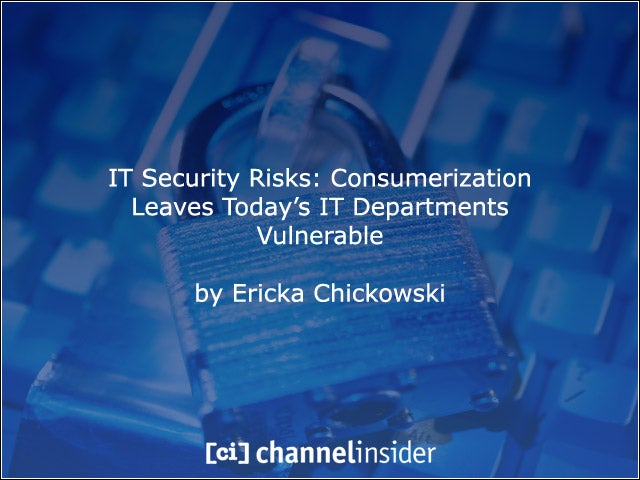 IT Security Risks Consumerization Leaves Today’s IT Departments Vulnerable
IT Security Risks Consumerization Leaves Today’s IT Departments Vulnerable
IT Security Risks: Consumerization Leaves Today’s IT Departments VulnerableBy Ericka Chickowski
 No Title
No Title
As the proliferation of cool new smartphones, netbooks and tablet computers continues both at home and within the workplace, many IT departments are being required by business stakeholders to bend to the influence of their users when it comes to the important decisions around technology adoption. In enterprises where standardized equipment used to be the only equipment available, users have made inroads with Apple iPhones, non-standard netbooks, iPads and even Android-based smartphones. Soon the Cisco Cius Android-based tablet computer will make its debut, offering yet another device for IT to secure. And HP is planning a number of devices for the enterprise based on the WebOS platform operating system that it got as part of the Palm acquisition. It all makes for a diverse bunch of devices. But are the risks of supporting so many different, non-standard devices being properly assessed as IT strategies are changed to account for user expectations? RSA recently commissioned a study of 400 senior IT and security leaders conducted by IDG Research Services to find out more on the matter. Here’s what they found.
 No Title
No Title
76 percent of security and IT leaders believe user influence on decisions to acquire devices and applications is on the rise.
 No Title
No Title
More than 60 percent of respondents report that users have some input regarding the types of smartphones purchased.
 No Title
No Title
20 percent say that they let users decide which smartphone they use.
 No Title
No Title
52 percent of organizations allow users to provide input on or make decisions about netbooks.
 No Title
No Title
50 percent involve users in computer tablet decisions.
 No Title
No Title
35 percent of businesses involve users in decisions regarding desktops.
 No Title
No Title
47 percent of them allow users input into laptop purchase decisions.
 No Title
No Title
A little over a quarter of those surveyed say their organizations allow employees to use personal computers or mobile devices for work.
 No Title
No Title
The majority of IT leaders say their companies have policies regarding connection of personal devices on the network, but almost 60 percent reported unauthorized connections still occur.
 No Title
No Title
23 percent of organizations have experienced a serious security incident or breach due to the connection of a personal device on the network.
 No Title
No Title
More than 80 percent of companies now allow some form of access to social networking sites.
 No Title
No Title
Of those companies, 62 percent use social networking for external communication with customers and partners.
 No Title
No Title
About 63 percent of those surveyed believe that devices such as notebooks and smartphones, as well as applications in the social media realm increase user productivity.
 No Title
No Title
But only 11 percent are very confident that they have the right level of security in place to account for the increased access provided to these consumer devices and apps.
 No Title
No Title
Just under a quarter of companies have a way to calculate the risks associated with consumer technology before using it for business purposes.
 No Title
No Title
38 percent say they assess risks in some cases but have gaps in their strategy.
 No Title
No Title
Approximately 40 percent of those surveyed don’t calculate the risks at all.

